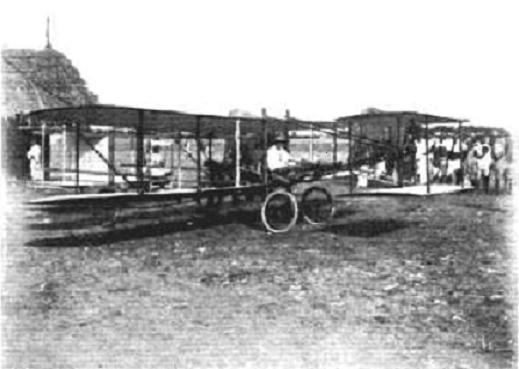In response to escalating demand and the need to handle multiple wide-body aircraft simultaneously, Chennai Airport has announced plans to significantly increase its number of aerobridges.
Currently equipped with four aerobridges at the international terminal, the Indian airport is swiftly progressing with the construction of additional infrastructure to meet burgeoning requirements.
Scheduled for completion by March of this year, the ongoing construction project will add another aerobridge to the airport’s facilities.
By 2025, with the anticipated completion of phase two of the terminal, Chennai International Airport aims to have a total of nine aerobridges capable of accommodating Code E-type aircraft, which are commonly associated with long-haul flights.
Aerobridges, also known as Passenger Boarding Bridges (PBBs), provide an enclosed and movable passageway extending from the airport terminal gate directly to an aircraft, facilitating seamless boarding and disembarkation for passengers.
The newly constructed aerobridges are specifically tailored to meet the demands of modern long-haul flights, such as the Airbus A350 and Boeing 777.
Highlighting the significance of this expansion, the Ministry of Aviation underscored that the augmentation of aerobridge capacity would enable the airport to handle up to nine international flights simultaneously, thereby potentially increasing the number of long-distance flights serviced by Chennai International Airport.
However, concerns have arisen regarding the impact of these developments on the proposed Greenfield airport project in Parandur.
Critics argue that authorities have shown reluctance to enhance services at Chennai International Airport, citing the ample opportunities for infrastructure development at the proposed Greenfield site.
Many wide-body long-haul flights currently operate out of Greenfield airports in Bengaluru and Hyderabad, prompting concerns about Chennai’s competitiveness.
Reports have previously highlighted limitations at Chennai International Airport, particularly its inadequate number of aerobridges and taxiways, hindering its ability to handle wide-body long-haul international flights effectively.
Consequently, several international airlines are reportedly considering shifting their services to airports in Bengaluru and Hyderabad, exacerbating concerns about Chennai’s competitiveness in the region.
Despite having thirteen aerobridges, only four are currently equipped to handle wide-body aircraft, which has prompted challenges for airlines operating Code E-type aircraft. This inadequacy not only impacts operational efficiency but also poses financial challenges for airlines, potentially leading to increased expenses.
Presently, aircraft are often parked at a distance from the terminal building, necessitating the transportation of passengers and luggage via specially arranged vehicles. This additional step in the process has been a source of frustration for passengers, contributing to delays in immigration and other procedures upon exiting the airport.
With the ongoing expansion of aerobridge capacity, Chennai International Airport aims to address these challenges, enhancing its capabilities to accommodate the growing demands of both domestic and international air travel.
However, the airport continues to face pressure to ensure its competitiveness amidst the region’s evolving landscape of aviation infrastructure development.
Chennai Airport: An Overview

The airport serving Chennai, Tamil Nadu, India, is called Chennai International Airport (IATA: MAA, ICAO: VOMM).
It’s located around 20 km southwest of the city center. It’s the 5th busiest airport in India and the 3rd busiest in terms of international traffic.
In the fiscal year 2022-23, it handled over 18 million passengers.
The airport consists of four terminals, with Terminals 1 and 4 for domestic flights and Terminal 2 for international flights. Terminal 3 will be demolished to extend Terminal 2.
Chennai Airport: History

Chennai was formerly known as Madras.
In 1910, the city saw its first test flight when Giacomo D’Angelis, a Corsican hotelier, built and flew an aircraft in Pallavaram, marking Asia’s first flight. Subsequent demonstrations attracted more aviators to showcase their flying machines, including Baron de Caters and Jules Tyck in 1911.
Commercial aviation in India commenced in December 1912 with the opening of the first domestic air route between Karachi and Delhi, while Tata Air Mail initiated a regular airmail service between Karachi and Madras in 1915.
Military use of the area included various units stationed at “St. Thomas Mount,” such as the No. 101 (General Reconnaissance) Squadron IAF during World War II.
Madras Airport, commissioned in 1930, initially served military operations and later transitioned to civilian use. The first passenger terminal, an Art Deco-style building, was completed in 1954.
Subsequent developments led to the commissioning of new domestic and international terminals in the 1980s, known as Kamaraj Terminal 2 and Anna Terminal 3, respectively.
Cargo handling facilities were also established, with an air cargo complex commissioned in 1978 and ISO 9001-2000 certification received in 2001.
International connections expanded with British Airways inaugurating service to London’s Heathrow Airport in 1988, and Delta Air Lines operating flights from New York City to Chennai via Paris in 2005.
Modernization efforts by the Airports Authority of India (AAI) began in 2008, aiming to enhance infrastructure and services at Chennai Airport, marking its continuous evolution to meet growing demands and global connectivity.
WHAT TO TAKE AWAY FROM THIS ARTICLE:
- Highlighting the significance of this expansion, the Ministry of Aviation underscored that the augmentation of aerobridge capacity would enable the airport to handle up to nine international flights simultaneously, thereby potentially increasing the number of long-distance flights serviced by Chennai International Airport.
- Commercial aviation in India commenced in December 1912 with the opening of the first domestic air route between Karachi and Delhi, while Tata Air Mail initiated a regular airmail service between Karachi and Madras in 1915.
- By 2025, with the anticipated completion of phase two of the terminal, Chennai International Airport aims to have a total of nine aerobridges capable of accommodating Code E-type aircraft, which are commonly associated with long-haul flights.























